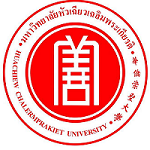กรุณาใช้ตัวระบุนี้เพื่ออ้างอิงหรือเชื่อมต่อรายการนี้:
https://has.hcu.ac.th/jspui/handle/123456789/3902| ชื่อเรื่อง: | การพัฒนาวิธีอิไลซา สำหรับตรวจหาแอนติบอดีต่อเชื้อ Burkholderia pseudomallei |
| ชื่อเรื่องอื่นๆ: | Development of ELISA method for detection of Burkholderia pseudomallei antibody |
| ผู้แต่ง/ผู้ร่วมงาน: | ศราวุธ สุทธิรัตน์ ทวีพร พันธุ์พาณิชย์ ณัฐริณี หอระตะ สุทิน วันสวัสดิ์ Sarawut Suttirat Sarawut Suttirat Natharinee Horata Sutin Wansawat Huachiew Chalermprakiet University. Faculty of Medical Technology Huachiew Chalermprakiet University. Faculty of Medical Technology Huachiew Chalermprakiet University. Faculty of Medical Technology Huachiew Chalermprakiet University. Faculty of Medical Technology. Undergraduate Student |
| คำสำคัญ: | เมลิออยโดสิส Melioidosis เบอร์โคลเดอเรีย ซูโดมัลลิไอ Burkholderia pseudomallei เอนไซม์ลิงค์อิมมูโนซอร์เบนท์แอสเส Enzyme-linked immunosorbent assay |
| วันที่เผยแพร่: | 2015 |
| บทคัดย่อ: | พัฒนาวิธี ELISA เพื่อตรวจหาแอนติบอดีต่อเชื้อ Burkholderia pseudomallei โดยการหาสภาวะที่เหมาะสมด้วยการทำ checkerboard titration เมื่อทดสอบกับกลุ่มตัวอย่างผู้ป่วยและกลุ่มตัวอย่างควบคุมจำนวน 54 ตัวอย่าง โดยแบ่งเป็น 4 กลุ่ม ประกอบด้วย ผู้ป่วยโรคเมลิออยโดสิส 24 ตัวอย่าง ผู้ที่มีภูมิลำเนาในพื้นที่ระบาดภาคตะวันออกเฉียงเหนือ 10 ตัวอย่าง ผู้ที่มีสุขภาพดีซึ่งไม่มีภูมิลำเนาในพื้นที่ระบาด 10 ตัวอย่างและผู้ป่วยโรคอื่นที่ไม่ใช่เมลิออยโดสิส (ซิฟิลิส, ภูมิต้านตนเอง, ไทฟอยด์, มัยโคพลาสมา, ไวรัสตับอักเสบ บี, ไวรัสตับอักเสบ ซี, ไข้เลือดออก และมะเร็งตับ) 10 ตัวอย่าง คำนวณค่า cut-off ได้ 0.21 พบผลบวกปลอมในกลุ่มตัวอย่างที่มีภูมิลำเนาในพื้นที่การระบาด 1 ตัวอย่าง แต่ไม่พบปฏิกิริยาข้ามกลุ่มกับโรคอื่น ๆ เมื่อคำนวณค่าความไว ความจำเพาะ และประสิทธิภาพของวิธีทดสอบได้ร้อยละ 100, 96.7 และ 98.2 ตามลำดับ อย่างไรก็ตามวิธี ELISA ที่พัฒนาขึ้นนี้ แม้จะมีความไว และความจำเพาะสูง แต่ยังมีขั้นตอนที่ยุ่งยากไม่สะดวกในการนำไปใช้ในพื้นที่ห่างไกล ซึ่งงานวิจัยนี้ควรจะพัฒนา ปรับปรุง และเพิ่มจำนวนตัวอย่างให้มากขึ้นเพื่อความน่าเชื่อถือของวิธีทดสอลต่อไป Optimal conditions of ELISA method for Burkholderia pseudomallei antibody detection were developed by checkerboard titration. Four groups of 54 sera consisting of 24 patients sera, 10 human sera in endemic areas, 10 sera of normal healthy population inhabitant of endemic area and 10 of other diseases (syphilis, autoimmune, typhoid, mycoplasma, hepatitis B, hepatitis C, dengue fever & hepatocellular carcinoma). The cut-off of this method was 0.21. One sample of human in endemic area showed false positive result but no cross reaction with other diseases. Sensitivity, specificity and efficiency of diagnosis were 100%, 96.7% and 98.2% respectively. Although developed ELISA showed high sensitivity and specificity but had complicated procedure so was not suitable to apply in rural area. However, more samples should be included for increasing reliability of this test method. |
| รายละเอียด: | สามารถเข้าถึงบทความฉบับเต็ม (Full Text) ได้ที่ :
http://journalgrad.ssru.ac.th/index.php/5-01/article/view/160/245 การประชุมวิชาการและนำเสนอผลงานวิจัยระดับชาติและนานาชาติ ด้านวิทยาศาสตร์ ครั้งที่ 6, 6, 1 (2015) มหาวิทยาลัยราชภัฎสวนสุนันทา : 473-481. |
| URI: | https://has.hcu.ac.th/jspui/handle/123456789/3902 |
| ปรากฏในกลุ่มข้อมูล: | Medical Technology - Proceeding Document |
แฟ้มในรายการข้อมูลนี้:
| แฟ้ม | รายละเอียด | ขนาด | รูปแบบ | |
|---|---|---|---|---|
| Development-of-ELISA-method-for-detection-of-Burkholderia-pseudomallei-antibody.pdf | 91.04 kB | Adobe PDF | ดู/เปิด |
รายการทั้งหมดในระบบคิดีได้รับการคุ้มครองลิขสิทธิ์ มีการสงวนสิทธิ์เว้นแต่ที่ระบุไว้เป็นอื่น
